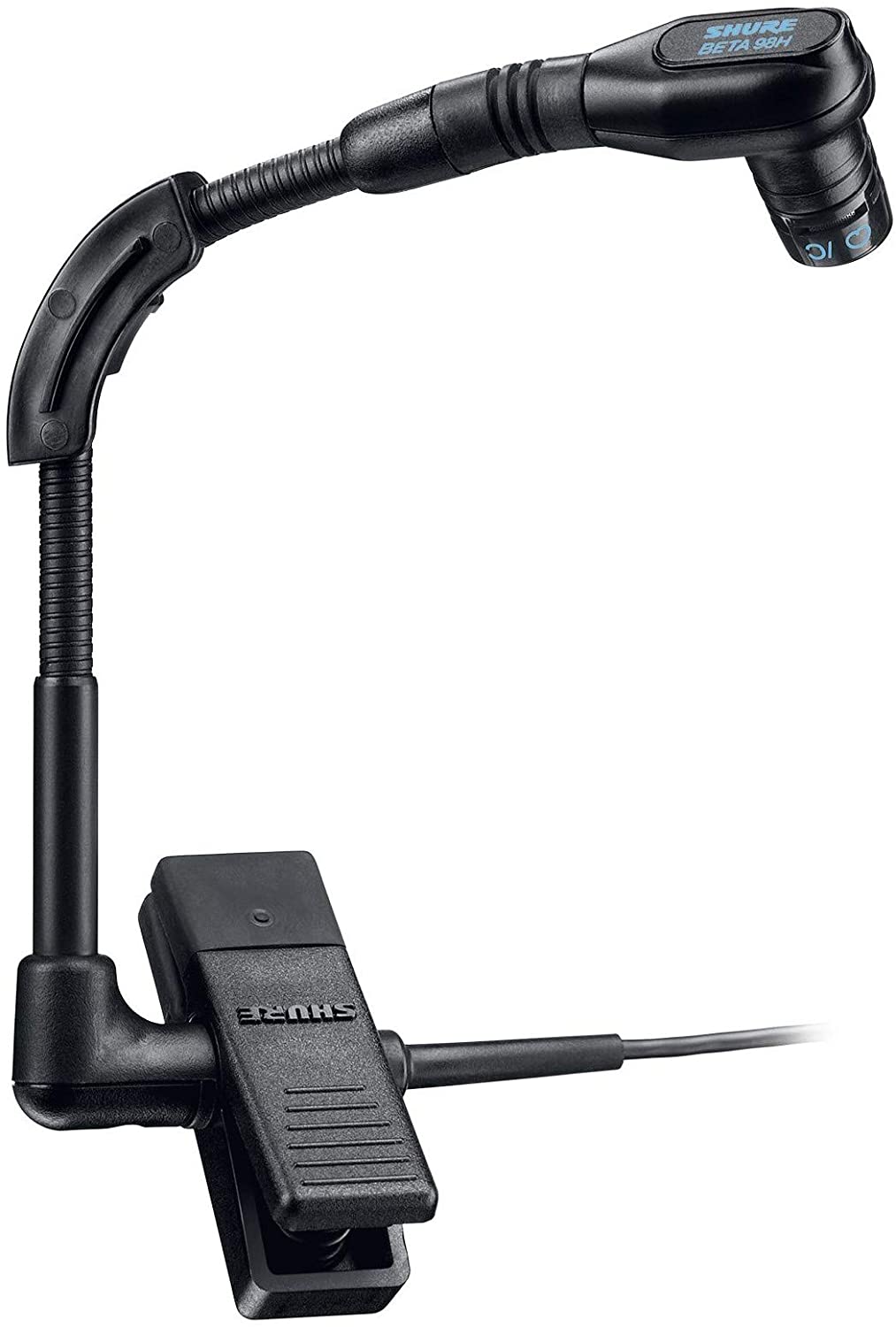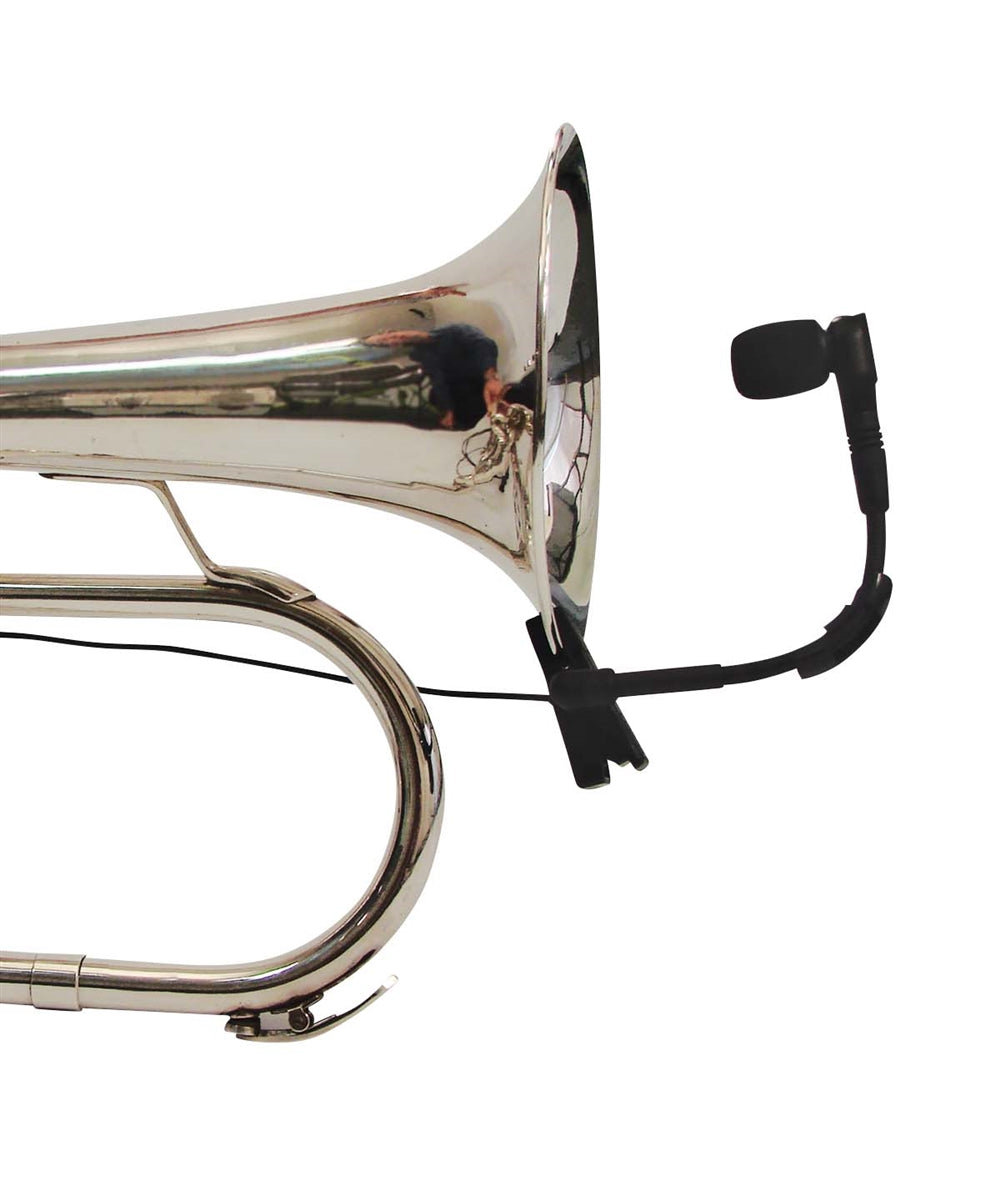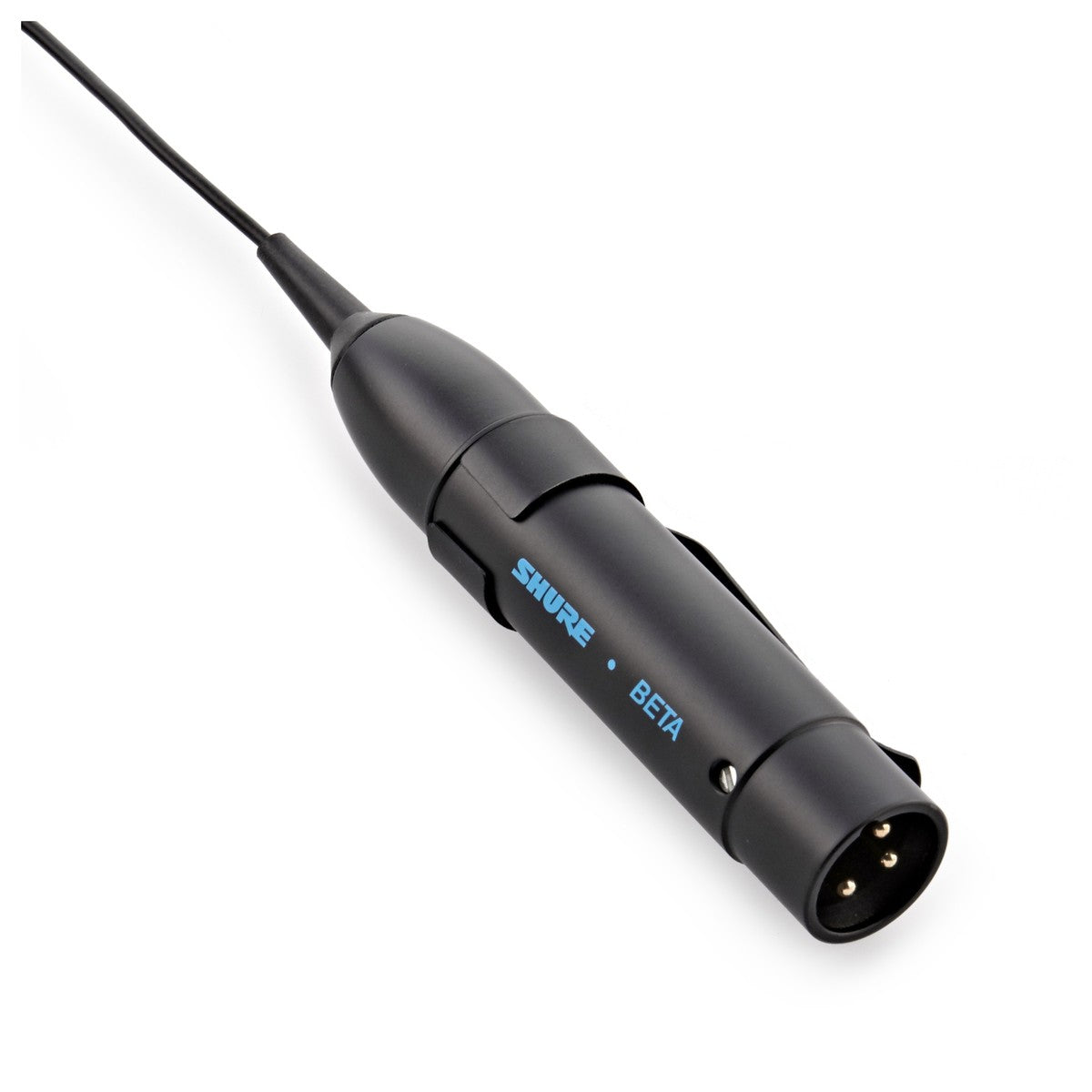Description
PRODUCT DETAILS
The BETA®98H/C and the wireless version WB98H/C are premium cardioid condenser instrument microphones that clamp onto the bell of wind instruments or onto the rim of percussion instruments. The integrated gooseneck and ratcheting swivel joint allows the mic to be easily positioned and secured, and an isolation shock-mount reduces the transmission of instrument 'key noise' and other mechanical noise. A gooseneck angle brace is included to provide better retention of the microphone placement during more active performances
- The Beta 98 H/C and WB98 H/C feature transformerless preamplifier circuitry which improves linearity across the full frequency range.
- The pickup pattern provides high gain-before-feedback and excellent rejection of unwanted noise.
- Its high maximum sound pressure level (SPL) enables it to handle the extreme demands of brass, woodwind and percussion instruments.
- The Beta98H/C features a 3 m (10 ft.) high-flex cable with attached preamplifier (XLR connection)
- The WB98H/C features a 1.6 m (5.3ft) high-flex cable terminating in a 4-pin mini-connector, for use with wireless bodypack transmitters
- Tailored frequency response for open, natural sound reproduction
- Compact, lightweight construction provides a low degree of visibility
- Gooseneck, ratcheting swivel joint and gooseneck angle brace allow for optimum placement and fixed positioning
- Legendary Shure ruggedness and reliability
- Interchangeable replacement cartridges:
- RPM108 : Cardioid
- RPM110 : Supercardioid
General Description
The Beta 98H/C miniature cardioid condenser microphone clamps onto the bell of wind instruments or onto the rim of percussion instruments. The integrated gooseneck and ratcheting swivel joint allows the mic to be easily positioned and secured, and an isolation shock-mount reduces the transmission of instrument vibrations. A gooseneck angle brace is included to provide better retention of the desired microphone placement.
Featuring a highly consistent cardioid polar pattern, the Beta 98H/C provides high gain before feedback and smooth off-axis rejection. It's ability to handle extremely high sound pressure levels (SPL) makes it ideal for live sound reinforcement on a variety of instruments.
Features
- Premier live performance microphone with Shure quality, ruggedness, and reliability
- Uniform cardioid pick-up pattern for maximum gain before feedback and excellent rejection of off-axis sound
- Tailored frequency response specifically shaped for open, natural sound reproduction
- Wide dynamic range for use in high sound pressure level SPL environments
- Adjustable gooseneck, angle brace and ratcheting swivel joint allow for optimal microphone positioning
- Compact, lightweight construction provide a low degree of visibility
- Interchangeable microphone cartridges with different polar patterns are available
- Snap-fit foam windscreens stay in place, minimizing wind noise
Applications
General Rules for Use
- Do not cover any part of the microphone grille with your hand, as this will adversely affect microphone performance.
- Aim the microphone toward the desired sound source (such as the talker, singer, or instrument) and away from unwanted sources.
- Place the microphone as close as practical to the desired sound source.
- Work close to the microphone for extra bass response.
- Use only one microphone to pick up a single sound source.
- For better gain before feedback, use fewer microphones.
- Keep the distance between microphones at least three times the distance from each microphone to its source (“three to one rule”).
- Place microphones as far as possible from reflective surfaces.
- Add a windscreen when using the microphone outdoors.
- Avoid excessive handling to minimize pickup of mechanical noise and vibration.
Applications And Placement
The following table lists the most common applications and placement techniques. Keep in mind that microphone technique is largely a matter of personal taste; there is no one “correct” microphone position.
| Application | Suggested Microphone Placement | Tone Quality |
|---|---|---|
| Reed Instruments | Place microphone a few inches from and aiming into bell. | Bright, minimizes feedback and leakage. |
| Brass & Woodwinds | Brass: 30 to 90 cm (1 to 3 ft.) away, on-axis with bell of instrument. | Bright, clear sound. |
| Woodwinds: 2.5 to 15 cm (1 to 6 in.) away, on-axis with bell of instrument. | Bright, clear sound. | |
| Bell of instrument 90° off-axis from front of mic. | Softer, mellow sound. |
Avoiding Pickup of Unwanted Sound Sources
Place the microphone so that unwanted sound sources, such as monitors and loudspeakers, are directly behind it. To minimize feedback and ensure optimum rejection of unwanted sound, always test microphone placement before a performance.
Recommended Loudspeaker Locations for Cardioid Microphones
Proximity Effect
Unidirectional (cardioid) microphones progressively boost bass frequencies by 6 to 10 dB below 100 Hz when the microphone is at a distance of about 6 mm (1/4 in.) from the sound source. This phenomenon, known as proximity effect, can be used to create a warmer, more powerful sound. To prevent explosive low frequency sound during close-up use, the bass response gradually rolls off. This provides greater control and helps the user take advantage of proximity effect.
Power Requirements
This microphone requires phantom power and performs best with a 48 Vdc supply (IEC-61938). However, it will operate with slightly decreased headroom and sensitivity with supplies as low as 11 Vdc.
Most modern mixers provide phantom power. You must use a balanced microphone cable: XLR-to-XLR or XLR-to-TRS.
Specifications
Type
Electret Condenser
Frequency Response
20 to 20,000 Hz
Polar Pattern
Cardioid
Output Impedance
150 Ω
Sensitivity
at 1 kHz, open circuit voltage
-56 dBV/Pa (1.6 mV) [1]
Maximum SPL
(1 kHz at 1% THD)
1000 Ω load155 dB SPL typical
Equivalent Output Noise
A-weighted
31 dB SPL (typical)
Signal-To-Noise Ratio
(Ref. 94 dB SPL at 1 kHz)
63 dB[2]
Dynamic Range
(at 1 kHz, 1000 Ω load)
124 dB, 132 dB
Clipping Level
at 1% THD
3 dBV (1.4 V)
Polarity
Positive pressure on diaphragm produces positive voltage on pin 2 with respect to pin 3
Power Requirements
11 to 52 V DCphantom power
[1] 1 Pa=94 dB SPL
[2] S/N ratio is difference between 94 dB SPL and equivalent SPL of self noise, A-weighted
Typical Frequency Response
Typical Polar Patterns
Wiring Diagram
Furnished Accessories
|
Zippered Carrying Bag |
95A2398 |
|
In-Line Microphone Preamplifier for WBH53 (Beta 53), WBH54 (Beta 54), Beta 91, WB98H/C (Beta 98), MC50B, MC51B and SM35-XLR |






